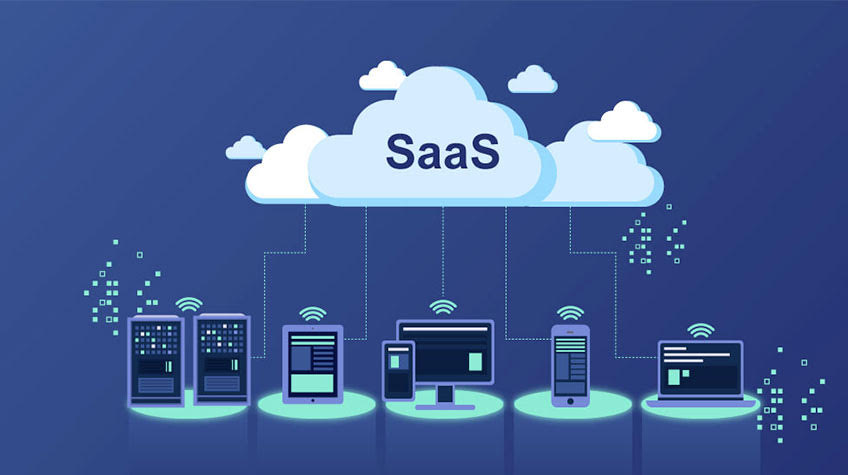Company leaders need to be constantly reassessing how they conduct business. The simple fact of the modern enterprise is that you should be adding to what works, and cutting what doesn't. This is especially true of technological solutions. Due to the rapidly advancing nature of IT, something that was working perfectly fine five years ago may be slowing you down today.
Although this can be said of any part of a business, this sentiment is perhaps most relevant for communications solutions. How you trade important information with your clients and partners highlights what your company is and what it can do, and relying on a less-than-perfect option could give your competitors an edge over your current operations.
To help you decide whether or not your current solution is working, let's review some of the questions you should be asking yourself about it.
How secure is my company's data?
When it comes to data transfer, your first concern regarding communications absolutely has to be security. Not only have hackers grown bolder in the past few years, but their abilities have advanced far beyond what they used to be. Nowhere is this more true than within email security. This service has been around for quite a long time, which means hackers have had decades to figure out how to break it.
"Your first concern absolutely has to be security."
One of the most effective means of introducing malware to an intended target's computer is through phishing. The hacker sends an email as though he is a reputable source, such as a business partner. At the end of this message, the criminal will attach a link that contains malware designed to infect the victim's machine. Due to the fact that the email itself looks legitimate, many people simply click this link without a second thought, thereby exposing any information contained on the computer. If your employees are used to receiving important documents via email, the chances of such an attack occurring are only increased.
In order to avoid these kinds of issues, many companies opt to instead utilize legacy fax machines in order to send and receive private documents. This technology is incredibly hard to intercept, and its age means that very few criminals are actually targeting it. However, there is another problem here in the form of physical documents.
When a fax is received, it's printed off on a physical sheet of paper. This means that it must be stored in something like a filing cabinet, which means that quite literally anyone with access to the room can now read and copy any important information. Many criminals like to dress up as delivery people or IT workers, make their way into a facility and look for these exact documents. If the fax machine isn't left under lock and key, you could be left exposed.
Are we getting back to clients/partners quick enough?
Many companies respond to this security issue by simply locking the fax machine up along with any stored documents that were sent and received through it. While this will certainly help to deter thieves, such an action effectively creates another problem in the form of inefficiency. Keeping a legacy fax machine segregated from the employee work space means that staff members will have to constantly get up to check if a message has been received.
What's more, it will also probably mean that a client's document is going to sit without a response for some time, which might frustrate or anger certain people. This may even prompt people to send an email in order to tell employees to check the machine. If this is the case, your communications solution clearly isn't working. You shouldn't have to utilize one technology to make up for the lapses in another.

Am I leveraging mobile solutions properly?
Continuing with this need to be quick with responses, companies should be questioning how well they are currently integrating smartphones into their communications solution. According to the Pew Research Center, around 45 percent of cellphone owners "rarely" turn off their device, and 31 percent say that they keep it on at all times.
This means that for the first time in the history of business, employees are able to receive important documents regardless of where they are working or what resources they have at their disposal. As long as they have their smartphone and a signal, they can communicate.
While this works well enough with email – outside of the security concerns expressed above – legacy fax machines, by definition, simply are not able to utilize mobile devices. The physical nature of this technology means that staff members have to be in the office to gain access to important documents, which limits where they can work as well as how quickly they can respond to a request.
Will my solution continue to work in the future?
Another vitally important question you need to ask yourself about your company is how will your current communications model fair in the years to come. This is especially important for legacy fax machines, as it would appear that the technology won't be holding out for much longer. It's no secret that America's copper phone line infrastructure is failing at a rapid pace.
This certainly isn't a surprise, considering how old this setup is. However, due to the move to more advanced forms of communication, many telecom companies simply aren't putting any work into repairing or revamping existing copper lines. In fact, companies like Verizon are simply working to switch customers to fiber.
Fiber is a much better technology for a multitude of reasons, so it's no surprise that Verizon is moving in this direction. However, the issue here is that legacy fax machines depend on the current copper phone line infrastructure in order to work properly. As this system continues to age, legacy fax solutions will have problems that simply won't be mitigated easily.
Should I make the move to FoIP?
If the answers to these questions trouble you, it may be time to make the switch to a more versatile and powerful form of communication. Those looking to change their current operations should definitely consider Fax over IP. This technology enables companies to leverage the security of legacy fax machines, with the convenience of modern email.
What this means is that you'll be able to utilize smartphones to access important documents, which translates to employees getting back to clients much faster. On top of that, FoIP doesn't rely on the copper phone line infrastructure, which means you won't have to worry about carriers no longer being able to provide you with the tools you need to get the job done.
Enhance enterprise communication, collaboration and compliance efforts with a proven FoIP solution from FaxCore. Contact FaxCore today to learn more about their 'Partly-Cloudy' fax solutions.





